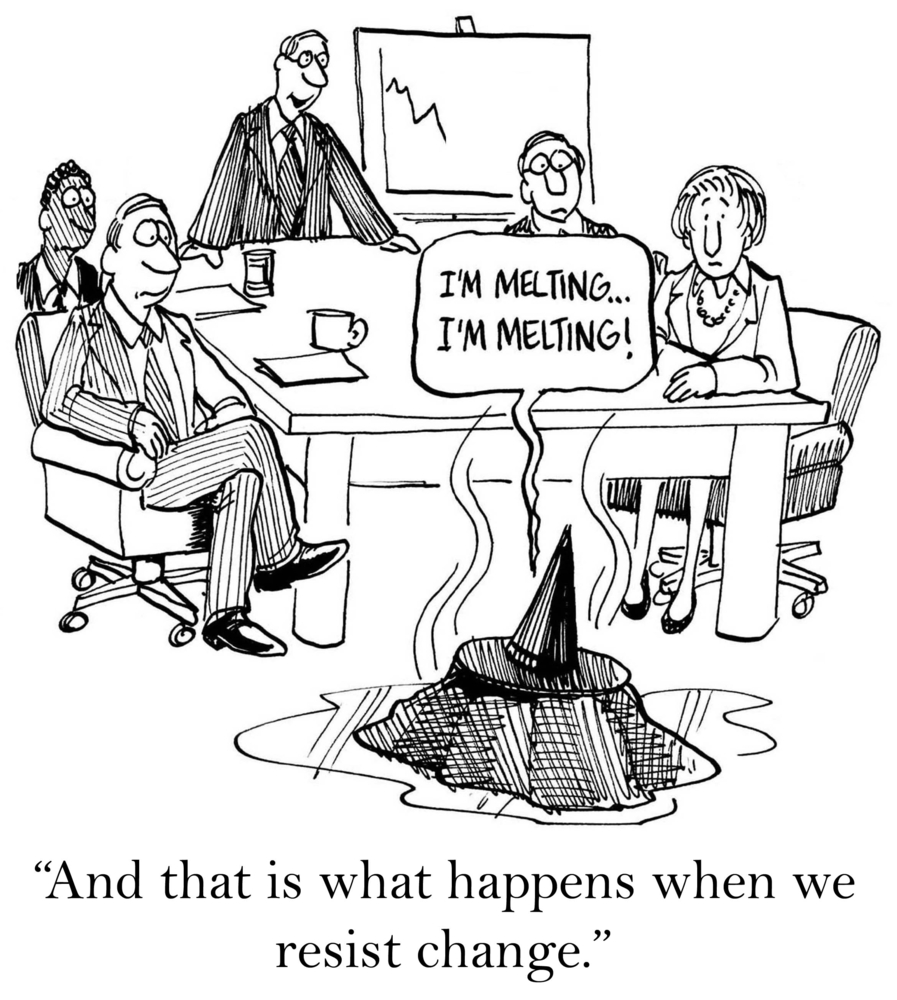Reasons Employees Fight Change
Even though change is a constant in our lives, there are many reasons employees fight change. You would think that companies and employees would get used to shifting and adapting. but, change (even when it makes complete sense) is almost always resisted in one way or another. Our challenge as leaders is to minimize the disruption of change while getting the desired results.
The Top 7 Reasons Employees Fight Change
We believe that the better prepared you are for the reasons employees fight change, the better you should be able to plan an effective strategy to overcome change resistance. Here are seven of the most common reasons employees fight change from change management simulation data:
- Fear of the Unknown
Many employees will only accept change as positive if the current situation is completely untenable and markedly worse than the prospect of trying something new, different, or unknown.
- Fear of Making the Change Transition Successfully
What will employees be asked to do differently? Will they be able to adapt favorably to the new boss, the new responsibilities, the new strategic direction, the new organizational structure, or the new skills required?
- Unclear Benefits, both Personally and for the Organization
If the vision for change or the business case for change at the company level are not spelled out in a compelling way or if the benefits to the individual are not persuasive, you can bet that change will be resisted from the beginning.
- Lack of Confidence that the Change Will Work
If employees doubt that the leadership is fully committed to the change or capable of successful change, there will be resistance. The plan for change must be equal to the challenge of what you are trying to accomplish.
- Unwillingness to Give Up the “Tried and True”
The learning curve required to change behaviors can be steep and painful. Many people prefer the “old” comfortable way and will be reluctant to make the effort to try the “new.” Old habits are hard to break and new habits are difficult to sustain – especially if the urgency for change is debatable.
- Disenchantment with Too Much Change
The status quo is often unacceptable, but continuous change can be overwhelming. When there is too much change, you are likely to have more “prisoners” of change than true and devoted converts to the “new way.”
- Feeling Sidelined and Uninformed
Employees who were not actively involved in the discussions prior to change are apt to feel neglected and as if they have no voice in the organization’s future.
The Best Way to Combat Change Resisters
Change management consulting experts know that the best way to combat all of these common objections is inclusion, information and involvement.
- Inclusion
Invite employees in the strategy design and planning stages of change so that they can understand the rationale for change, contribute their perspectives, and feel a sense of change urgency and ownership. This will increase their commitment to the plan and their motivatio to support implementation.
- Information
Information flow matters. Maintain a stream of regular and two-way communications so employees can follow the progress of the initiative, begin to see the positive results, and provide feedback. Welcome questions and suggestions for improvement. You will be able to more effectively manage objections and resistance if you are in the middle of the discussion and not kept in the dark when employees are resistant, insecure, or apathetic.
- Involvement
Active involvement and culture of collaboration is critical to change management success. Make sure that everyone understands their role and the key interdependencies required to be successful. Often, success will depend upon teams working together toward the goal in a cooperative and supportive way.
The Bottom Line
Smart change leaders know that it is natural for people to initially fight change – even if the changes are positive and make sense. They understand the top seven reasons people oppose change and ensure that they get inclusion, information and involvement right during every step of the change process.
To learn more about how to successfully manage organizational change, download The 5 Science-Backed Lenses of Change Leadership to Get Right
